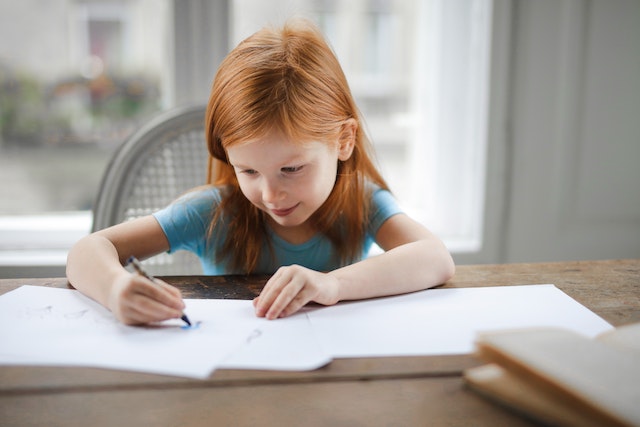It is imagination that plays a huge role in the formation of a children’s personality, introducing them to the creative world of art and technology. It is the key to their future success. A developed imagination helps a child to learn easily, engage in scientific, and creative projects, and find solutions in difficult situations.
What is imagination?
Imagination is a type of thinking, an active creative process in which new ideas and images of possible or impossible objects and situations are created based on existing real knowledge. A well-developed, bold, controlled imagination is an invaluable property of original non-standard thinking.

It is necessary to develop a child’s imagination from early childhood. If you do not engage in the development of creativity in a child, then by the age of 18 these abilities fade away.
Imagination is based mainly on real things. And therefore, the more knowledge children have the richer their imagination. Therefore, if we want children to become creative people, we must help them to accumulate experience and knowledge, and maintain their observation, and curiosity.
Children like to play, and in the game, they subconsciously learn to think. When they begin to fantasize, in no case should they be criticized, but on the contrary, they should be praised. And then the child begins to fantasize easily and with pleasure. Try to find time for “useful” games to develop your child’s creative imagination.
There is now a variety of imaginative play toys and games that will help develop your child’s imagination. Here are some of them.
Creating a prequel and sequel to your favorite fairy tale
Does the child have a favorite fairy tale? A cartoon? A book? Invite him to think and act out how his favorite character lived before and after the familiar plot. It will be better if they try to come up with as many colorful details as possible. Help them and create a new fairy tale together!
Life history
Let the child imagine himself as his favorite toy and tell the life story on her behalf. You can complicate the task and compose a story on behalf of mom’s shoes, driveway door, grandma’s glasses, or freshly baked cookies.
If only…
Propose a child to dream up what would happen if… and come up with some tall tale.
For example, what if:
- crocodiles were flying in the sky;
- chocolates fell from the sky during the rain;
- children went to work, and dads and moms went to kindergarten;
- cats and dogs started talking in a human voice.
Etc. The subject can be any: animals, natural phenomena, clothing, weather, or food. The more illogical the questions, the more interesting it will be for the child to come up with answers. And then switch places, let the young dreamer come up with similar questions for you.
What happens if…
A similar game. The child needs to answer the question “What happens if …”. Try to make the questions not boring for the child. And there is no need to demand scientifically-based answers from him.
Here are some sample topics for discussion. What happens if:
- all the candies in the world disappear;
- a favorite fairy tale hero comes to life;
- your house turns into a gingerbread house;
- kind aliens come to us. And if they are evil?
A baby can answer with one sentence or compose a whole story.
The new purpose of the item
Another game for a children’s team or a family. Alternately run objects around the circle, and the children must come up with a new purpose for them. For example, a hat can be adapted for a nest for birds or as a box for small parts, pots for toy soup, etc.). A sugar bowl will fit as a pencil holder, a pot for a flower, instead of a soup plate or a box for buttons or jewelry, etc. The most incredible applications of things must be noted.
Immersion in the picture
Do you have books with reproductions of paintings? If not, it’s okay, everything can be found on the Internet. Your task is to open a suitable picture of the painting in a book or on a computer screen. And ask the children to imagine that they found themselves inside her. Let them tell you what he sees moving along it.
A nonexistent animal
Invite the kid to come up with a non-existent animal. What will it look like, what is special about it, who are its friends and enemies, where it lives, what it eats, how many and what kind of cubs are born, what sounds it makes, etc. If desired, the invented animal child can draw it.
Draw a mood
Ask the child to draw his mood (paper and paints are needed). For most, the task will not be easy. But kids with rich imaginative thinking often surprise. Say that you can depict the mood on the sheet in absolutely any way. And that there is no right or wrong answer to this task.
Sometimes it happens that children are so used to thinking in patterns that it takes time for them to realize that they can think differently. So it is useful to create an atmosphere of foolishness and light madness at home. Strange and ridiculous tasks are needed. You can set a topic, and the children themselves come up with how to present it. In some ways, adults can help children, and give them an idea. And, please, less seriousness!

